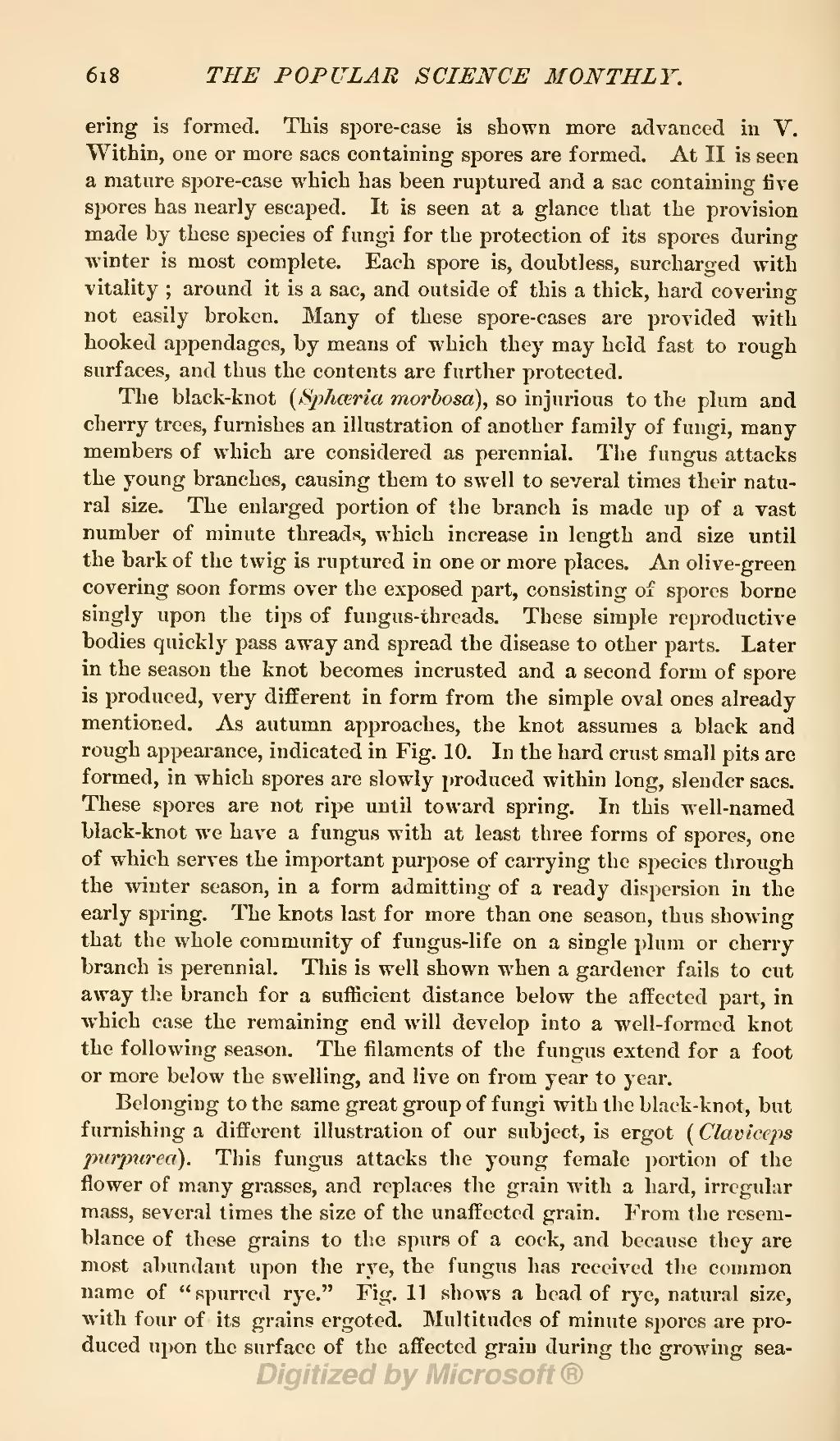ering is formed. This spore-case is shown more advanced in V. Within, one or more sacs containing spores are formed. At II is seen a mature spore-case which has been ruptured and a sac containing five spores has nearly escaped. It is seen at a glance that the provision made by these species of fungi for the protection of its spores during winter is most complete. Each spore is, doubtless, surcharged with vitality; around it is a sac, and outside of this a thick, hard covering not easily broken. Many of these spore-cases are provided with hooked appendages, by means of which they may hold fast to rough surfaces, and thus the contents are further protected.
The black-knot (Sphæeria morbosa), so injurious to the plum and cherry trees, furnishes an illustration of another family of fungi, many members of which are considered as perennial. The fungus attacks the young branches, causing them to swell to several times their natural size. The enlarged portion of the branch is made up of a vast number of minute threads, which increase in length and size until the bark of the twig is ruptured in one or more places. An olive-green covering soon forms over the exposed part, consisting of spores borne singly upon the tips of fungus-threads. These simple reproductive bodies quickly pass away and spread the disease to other parts. Later in the season the knot becomes incrusted and a second form of spore is produced, very different in form from the simple oval ones already mentioned. As autumn approaches, the knot assumes a black and rough appearance, indicated in Fig. 10. In the hard crust small pits are formed, in which spores are slowly produced within long, slender sacs. These spores are not ripe until toward spring. In this well-named black-knot we have a fungus with at least three forms of spores, one of which serves the important purpose of carrying the species through the winter season, in a form admitting of a ready dispersion in the early spring. The knots last for more than one season, thus showing that the whole community of fungus-life on a single plum or cherry branch is perennial. This is well shown when a gardener fails to cut away the branch for a sufficient distance below the affected part, in which case the remaining end will develop into a well-formed knot the following season. The filaments of the fungus extend for a foot or more below the swelling, and live on from year to year.
Belonging to the same great group of fungi with the black-knot, but furnishing a different illustration of our subject, is ergot (Claviceps purpurea). This fungus attacks the young female portion of the flower of many grasses, and replaces the grain with a hard, irregular mass, several times the size of the unaffected grain. From the resemblance of these grains to the spurs of a cock, and because they are most abundant upon the rye, the fungus has received the common name of "spurred rye." Fig. 11 shows a head of rye, natural size, with four of its grains ergoted. Multitudes of minute spores are produced upon the surface of the affected grain during the growing sea-
